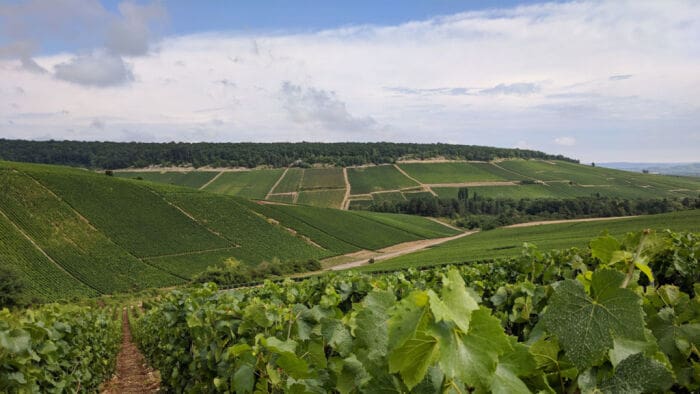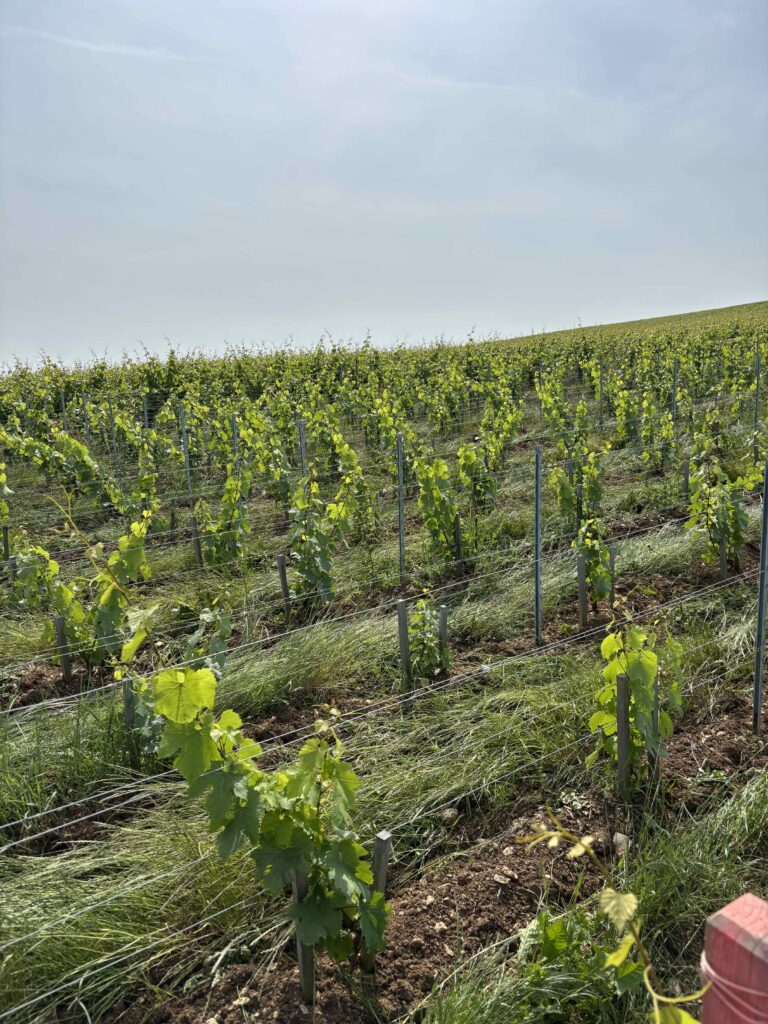
Champagne’s Rising Star of Terroir and Organic Dynamism
Nestled in the southern reaches of the Champagne region, far from the grand boulevards of Reims and Épernay, the Côte des Bar has long been a hidden gem. Its rolling hills, dense forests, and patchwork of small vineyards give it a character that feels closer to Burgundy than to the chalky plains of the Marne. For decades, the region lived quietly in the shadow of Champagne’s northern heartlands, supplying grapes to the grandes maisons while its own name remained little known to wine lovers. Today, however, the Côte des Bar is undergoing a thrilling transformation—one that celebrates terroir, artisanal craftsmanship, and a remarkable shift toward organic viticulture.
A History Shaped by Resilience
The story of the Côte des Bar is a story of resilience. Unlike the historic vineyards of the Montagne de Reims or the Côte des Blancs, this southern territory was integrated into the Champagne appellation relatively late. During the early 20th century, the so-called “Champagne Riots” (1910–1911) revealed the tensions between the north and the south. Vignerons in Aube, the department where the Côte des Bar lies, fought hard to be recognized as true Champagne producers, and it wasn’t until 1927 that their vineyards were definitively included in the appellation.
For most of the 20th century, the Côte des Bar remained a land of growers rather than brand builders. Its farmers cultivated Pinot Noir—still the dominant grape today—with a focus on selling fruit to the grandes maisons. Bottlings under local names existed, but they were rare and modest, as the market for grower Champagne was limited. While the Marne was developing its high-profile brands, the Côte des Bar quietly perfected its farming practices, often in challenging conditions and with limited recognition.

What do experts think?
To understand where Côte des Bar is heading, we asked experts who work closely with Champagne: how they see the region’s style today, which producers set the tone, and why organic farming here is not a fad but the logic of the terroir.
The Côte de Bar is so interesting to us because it continues to be very dynamic. It’s not so dominated by big, traditional names. There are many young winemakers emerging, and thus there’s much to discover. This is especially important for us, in the organic and biodynamic sectors.
There are many small wineries that offer very good value for money. There are unusual Champagnes, whether from other grape varieties (Arbanne, Pinot Gris, Pinot Blanc, etc.) or other styles. In general, the Champagnes are somewhat more powerful and mineral than those from other regions. I always say: Champagne from the Cote de Bar are Chablis or Burgundy with bubbles. This makes them excellent food companions and very interesting for restaurants.
I see Côte des Bar as a rebellious region, opposed to the principal Champagne territory, where historically grandes maisons have the power. Côte des Bar has its stars – Fleury, Vouette et Sorbée, Cédric Bouchard, Ruppert Leroy and many others. These flagship names are essential to put the region on the world wine map. Côte des Bar wines always charm me with their fullness, fruitiness and ripeness, let’s say opulence, often being bone-dry. They feel free and, in some cases, a bit wild, which I like, when the winemaker knows what he is doing.
The clarity of the products! Predominantly two grape varieties, Chardonnay and Pinot Noir! Very “winey” and therefore perfect food pairings! The proximity to Burgundy and the similar, partly identical, soil composition also influences the style.
Crystal Wine Collection, a wine importer in Seoul, strives to import artisanal wines that embody the unique philosophy of each winery. These wines are made using grapes that have been grown with hands covered in dirt and sweat by themselves. In this regard, the Côte des Bar region is in line with our vision.
Although the Côte des Bar region has fewer number of wineries than other Champagne regions, we import a relatively high number of brands from there (17% of the total across the four Champagne main regions. We’re working with 6 wineries; Charles Dufour, Clandestin, Fleury, Louise Brison, Nathalie Falmet, Vouette et Sorbee).
There are many small wineries that express their terroir in a free and independent manner, offering a wide range of choices. However, the fact that each cuvée is produced in small quantities can be both an advantage and a disadvantage for importers. Another advantage is that prices remain reasonable compared to other regions.
Compared to other regions, a high percentage of wines undergo both fermentation and ageing in oak barrels, as does a high percentage of brut nature wines. In terms of tasting, the minerality from the Kimmeridgian clay and limestone soils, similar to those in Chablis, is more noticeable than in other regions, as are the aromas of ripe fruit grown in abundant sunlight, soft spices, flowers and the notes of ginseng root, honey-marinated ginger and mint found in Côte des Bar Champagne.
It is also highly satisfying when paired with Korean cuisine. Korean cuisine has a very wide spectrum of flavours. One table might contain light dishes, salty and sweet dishes, spicy dishes, and fermented foods such as soy sauce, doenjang(soybean fermented paste sauce) and kimchi, which are full of umami.
Champagne is a good choice to accompany the wide range of flavours in Korean cuisine. Especially, the rich fruit aromas and soft bubbles of Côte des Bar champagne soften spicy flavours, and its acidity and minerality complement salty flavours well. Additionally, the fermentation process common to both Korean fermented foods and champagne ensures they complement the colorful and vibrant flavours of Korean cuisine. This has led many Korean sommeliers to become interested in pairing Cote des Bar Champagne with food.
In the earlier days of Rosenthal Wine Merchant, the Aube was not considered among the top terroirs of Champagne and little attention was paid to the area. As the number and quality of grower Champagnes around the entire region expanded over the past 25 years, we started to pay more attention to the wines coming from outside of the areas and villages typically known as the best sources, and our tastings of a number of wines from the Cote des Bar showed enormous progress and potential.
When we finally started visiting the area about five years ago, the history and profile of the region stuck us as more meaningful and important to the story of Champagne than we previously understood. We knew the region had historically provided grapes to the neighbors to the north but the style and quality of the wines made sur place were very compelling. We find the wines to be more vinous and substantive than many wines from other parts of Champagne (particularly with the emphasis on Pinot Noir), with many growers investing in long aging sur lattes to ensure the wines that enter the market are ready to drink and show the elegance and complexity conveyed by the terroir of the region. The care and attention to detail at the growers we have visited shows a dedication to making wines that compete with the greatest wines of Champagne and we are investing in growing the market for the wines of the region, as an ideal expansion of what Champagne can mean to our clients. The focus on Pinot Noir also yields wines that are often more appropriate companions at the table, pairing with a wider variety of food than a typical Blanc de Blancs, which also marries well with our philosophy that great wines usually demand great food to fully understand them.
From supplier to terroir storyteller: In the words of Delphine Brulez, owner and winemaker at Louise Brison Champagne
Over the past twenty years, we’ve witnessed a quiet revolution here in the Côte des Bar—one I’ve been proud to be part of. Inspired by what’s happening across Champagne and by the Burgundian philosophy of expressing terroir, many of us have begun rethinking how we approach our vineyards and wines.
What makes this place so special is our geology. The Kimmeridgian marl and limestone—just like in Chablis—give our Pinot Noir a unique texture and aromatic identity that sets it apart from the fruit grown further north in the Marne. That’s why, at Louise Brison, we focus on crafting single-parcel Champagnes. We vinify many of them in oak and use as little intervention as possible. The idea is to let each slope, each soil, speak clearly and honestly.
There was a time when growers here mostly sold grapes to the grandes maisons. Branding wasn’t our focus—farming was. But now, a new generation is turning that model on its head. More and more sommeliers and collectors are coming to the Côte des Bar because they’re looking for something real—Champagne that’s elegant, yes, but also grounded in place and personality.
And when it comes to sustainability, I truly believe the Côte des Bar is leading the way. Compared to the Marne, where organic conversion is still slow, we’ve embraced it with energy. Our slopes are steeper, our vineyards more spread out—and maybe that encourages independence. We’ve learned that when you care for your soils—through compost, cover crops, and biodiversity—you grow stronger vines. Healthier vines. Wines that are more alive. You taste the soil, the season, the soul of the vineyard.
For me, this region isn’t just catching up—it’s shaping the future of Champagne. We’re not just grape suppliers anymore. We’re storytellers of terroir. And that story is being told bottle by bottle, from one passionate grower to another.
Côte des Bar is no longer a secret—it’s a source of some of Champagne’s most characterful wines. Which ones have found their way into your glass?
